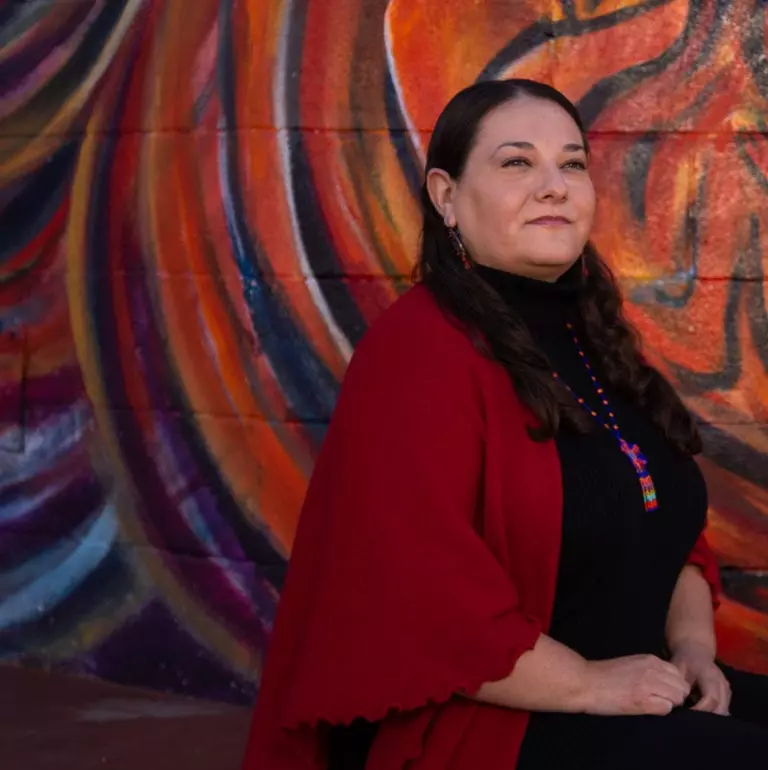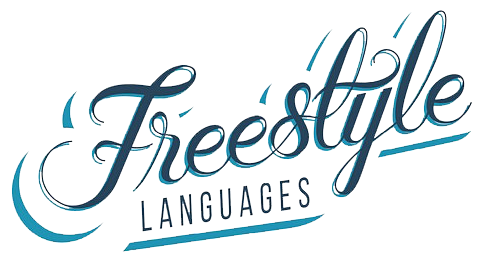Team Freestyle
Spotlight On Nancy Flores & Austin Vida For #IWD
Join us in celebrating International Women’s Day! On this global day which celebrates the social, economic, cultural and political achievements of women, we highlight Nancy Flores as Editor of Austin Vida, a Latina-led digital publication which aims to lift the Latina/o/x comunidad and illuminate the resilience it takes to be Latina/o/x in Austin.
Nancy, the daughter of Mexican immigrants, has specialized in covering underrepresented Latino communities in Central Texas. Nancy’s contributions to Austin’s Latino community recently earned her the Award of Excellence in Media Arts from the city’s Mexican American Cultural Center. In 2019, Remezcla named her among the nation’s “Latino Columnists You Should Be Reading.”

How did you progress from your origin story to where you are today?
I’m the daughter of Mexican immigrants who grew up in Eagle Pass, Texas, a small town on the U.S./Mexico border. Everything about my identity stems from my border upbringing. My life has been braided with cultural strands that are impossible to untangle and give me a unique vision and approach to everything I do.
Journalism drew me early on for its ability to shine a light on important social issues. That led me to study Communication and English Writing and Rhetoric at St. Edward’s University in Austin, where I received the College Assistance Migrant Program scholarship. As a student, my journalism career path began to take shape as I took on various newspaper reporting internships at newsrooms such as the El Paso Times.
I’ve spent 17 years working in newsrooms across the U.S. and Mexico including The Miami Herald’s Mexico edition and the Austin American-Statesman. Now, I’m blazing a new trail as a media entrepreneur leading the relaunch of the digital Latino news and culture site, Austin Vida.
Journalism drew me early on for its ability to shine a light on important social issues. That led me to study Communication and English Writing and Rhetoric at St. Edward’s University in Austin, where I received the College Assistance Migrant Program scholarship. As a student, my journalism career path began to take shape as I took on various newspaper reporting internships at newsrooms such as the El Paso Times.
I’ve spent 17 years working in newsrooms across the U.S. and Mexico including The Miami Herald’s Mexico edition and the Austin American-Statesman. Now, I’m blazing a new trail as a media entrepreneur leading the relaunch of the digital Latino news and culture site, Austin Vida.
What does Austin Vida do and why is its work so important?
Austin Vida, a Latino news and culture site, is an independent local media company aiming to empower our community by amplifying our stories, events and cultura. Oftentimes Latinos see themselves in the news only when it involves a harrowing story or one focused on crime, but we are much more than our tragic tales. We are also changemakers and glass ceiling breakers who are transforming our communities.
Latinos make up about 35% of Austin’s population and our historias deserve to be told with nuance, accuracy and care from our points of view.
Latinos make up about 35% of Austin’s population and our historias deserve to be told with nuance, accuracy and care from our points of view.
How did living in Mexico City impact your own sense of cultural identity?
I became a Mexico City-based journalist early in my career after wrapping up a two-year Hearst Newspapers Fellowship. Although I grew up along the Mexican border, most of the time I had spent in Mexico up until then had been in northern Coahuila where border culture is prevalent.
I quickly discovered that although I was often considered “too Mexican” in the U.S., I sometimes felt not Mexican enough living in that nation’s capital. I became a dual citizen while living there, hoping to fully belong in my parent’s homeland.
With more life experience now, I realize that living between worlds, or nepantla, is among my superpowers and comes with its own unique strength and beauty.
I quickly discovered that although I was often considered “too Mexican” in the U.S., I sometimes felt not Mexican enough living in that nation’s capital. I became a dual citizen while living there, hoping to fully belong in my parent’s homeland.
With more life experience now, I realize that living between worlds, or nepantla, is among my superpowers and comes with its own unique strength and beauty.
How has it been navigating the majority-male reporting / journalism spaces as a woman?
It’s no secret that women are underrepresented in most American newsrooms, but women of color are severely underrepresented. It’s a dire situation when newsrooms don’t reflect the communities they report on. This has an effect on everything from the type of stories that are produced to how stories are reported. The lack of women is also sorely felt in newsroom leadership positions across the country.
As a Latina journalist, navigating the journalism world throughout my career has often been challenging, with issues ranging from the wage gap to career advancement opportunities.
I’m so proud to now lead Austin Vida and be among the few women of color news entrepreneurs in the country. I want to help change the future of the digital media landscape. For me, that’s meant blazing a new journalism trail that will help empower other female journalists of color.
As a Latina journalist, navigating the journalism world throughout my career has often been challenging, with issues ranging from the wage gap to career advancement opportunities.
I’m so proud to now lead Austin Vida and be among the few women of color news entrepreneurs in the country. I want to help change the future of the digital media landscape. For me, that’s meant blazing a new journalism trail that will help empower other female journalists of color.
What advice would you give to aspiring young female journalists?
Aspiring young female journalists should seek mentors in the field or at their universities who can help guide them. They should also apply to media internships, even if they feel they do not check all of the requirements or qualifications. Oftentimes, young women will take themselves out of the running before even trying. Even if you don’t have everything on an employer’s check list, you likely have some other qualification that is even stronger.
What is the best way individuals can help support Austin Vida and its mission?
Visit austinvida.com and sign up for our free monthly Cultura events guide and newsletter as we gear up for our upcoming launch.
Follow us on social media and tell two friends about Austin Vida! We aim to be more than a digital publication – we want to build comunidad.
Follow us on social media and tell two friends about Austin Vida! We aim to be more than a digital publication – we want to build comunidad.
Is the nonlatino community welcome to engage with Austin Vida?
Absolutely! I think the protests against racial injustice last summer also highlighted the need for allies in our communities. Many folks want to help and support communities of color but don’t know how. Allies can help be part of the solution by engaging with Austin Vida, sharing its news, following on social media, helping connect us with community partners and sponsors with a shared vision. We’re in this together and our city’s Latino culture enriches everyone in the community.
Freestyle Languages
Language learning your way.
